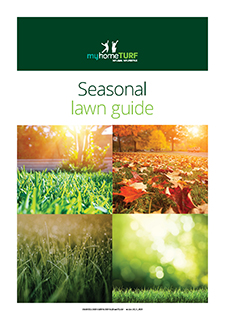What Are Parasitic Wasps & How Can They Help Your Lawn?
The name ‘Parasitic Wasps’ is unnecessarily terrifying, because the truth is that the presence of these bugs around your home might be both an indicator of an outbreak of ...

Your soil’s pH or ‘potential of Hydrogen’ Level is a key indicator as to the health of your lawn, and directly related to your soil’s ability to hold and make available the various nutrients necessary to successfully grow lush, healthy grass. It’s measured on a spectrum between Acidic (pH level below 5.5), Neutral, or Alkaline (pH level above 8.0) on a scale of 0-14.
It’s just as important to note that your soil’s pH can change over time, and a shift in your pH levels might account for a decrease in overall lawn vitality even if your mowing, watering and fertilising schedules all remain unchanged.
Soil pH can be considered a measurement of your soil’s ability to make vital nutrients available to your lawn to assist with healthy growth, making it an important thing to keep an eye on.
Unlike lawn pest activity or disease there’s no visual cue that your soil’s pH has changed so it’s an important thing to test, and correcting your pH levels can save you money in the long run as you’ll be able to achieve a better looking lawn whilst using less fertilisers and lawn supplements.
If you’ve noticed a deterioration in your lawn’s condition (that’s not due to winter dormancy) then it’s worthwhile checking your soil pH straight away. Similarly, if you’re about to embark on a new fertiliser plan then testing your soil’s pH can save you from overusing some of your supplements.
You can test your soil’s pH all year round and as often as you’d like, but as we mentioned earlier, it’s prone to natural ebbs and flows as a living ecosystem so don’t try and correct minor deviations, focus on keeping it in a healthy range rather than aiming for a specific pH number.
The most accurate way to test your soil’s pH is to collect a sample and have it professionally analysed, where a laboratory will measure your pH along with other key nutritional markers and can provide feedback on a tailored supplement regime to suit. Lawn Pride offers professional soil testing.
Most retailers including hardware chains like Bunnings will have DIY pH testing kits available on the shelf, however if you can’t get to the store there’s a simple way to test using a few common household items.
Gather samples from several sections of your lawn down to a depth of between 150-200mm to get the best snapshot of your soil at various depths and combine it in a container with a 1:1 mixture of water and vinegar. If the mixture fizzes then your soil is Alkaline.
Repeat the process, but this time mix water with baking soda at 1:1. A reaction here means your soil is Acidic.
Note that the vinegar and baking soda tests will only indicate if your soil is on the Alkaline or Acidic side of the scale and cannot help you determine exactly how far along each spectrum it is.
Alkaline soils are harder to correct than Acidic soils, however it is possible through the application of sulphur or sulphates, like commonly available Sulphate of Ammonia or Iron Sulphate. Alternatively, Lawn Pride’s Descend is a new product that tackles Alkaline soils with an exclusive mix of organic acids.
Aim to neutralise Alkaline soil over several lighter applications of product to reduce stress on the lawn.
The easiest way to treat acidic soils is with an application of Lime. Lime is commercially available in convenient granular form making it easy to apply evenly, and it’s safe for use around pets and children.
Measuring and knowing your soil’s pH level is a must for the discerning lawn lover, especially if you’re looking to extract the most out of your lawn this season. It’s an indicator as to overall soil health and ensuring it’s in the correct range directly translates to a healthier lawn, and can save you money on expensive fertilisers and supplements in the future.
Sign up for our Newsletter to receive your free guide.
